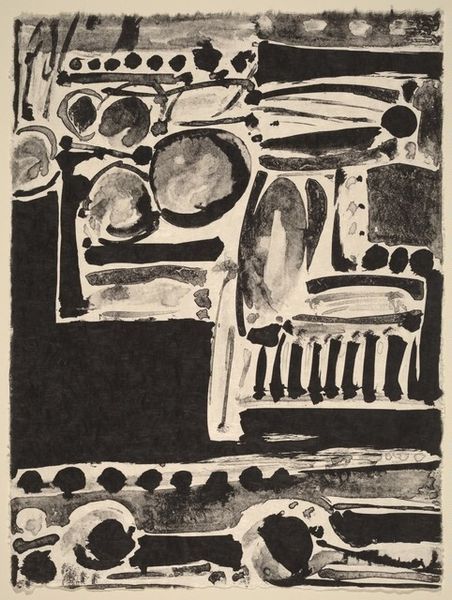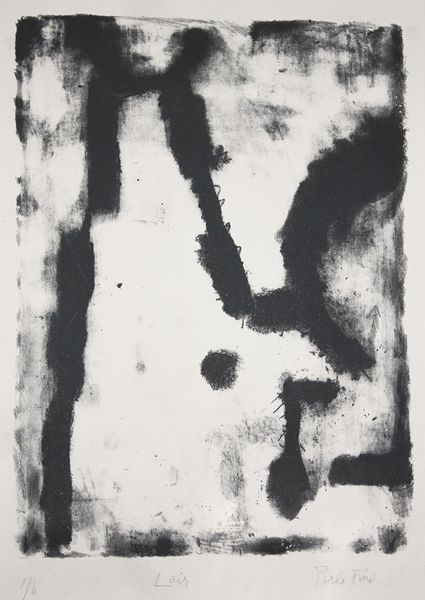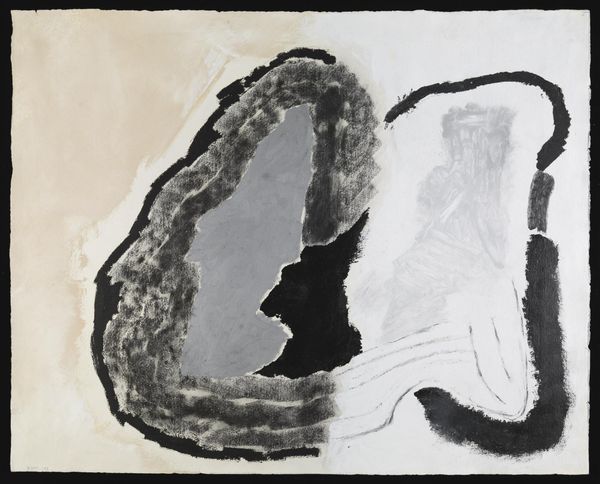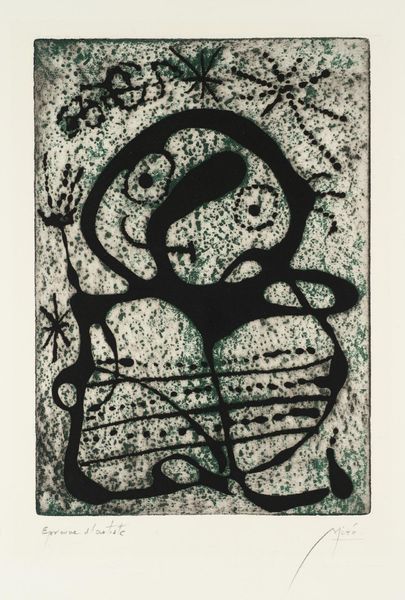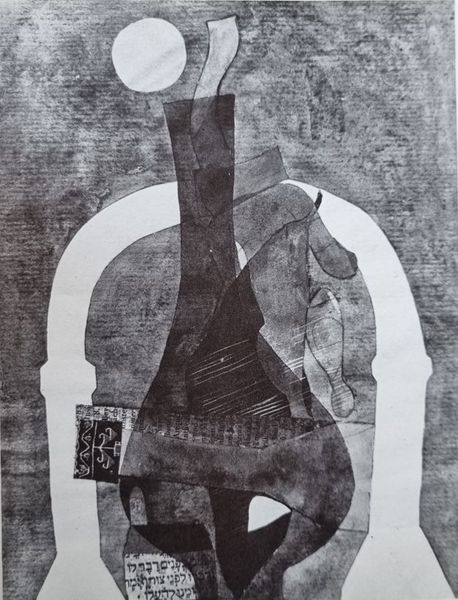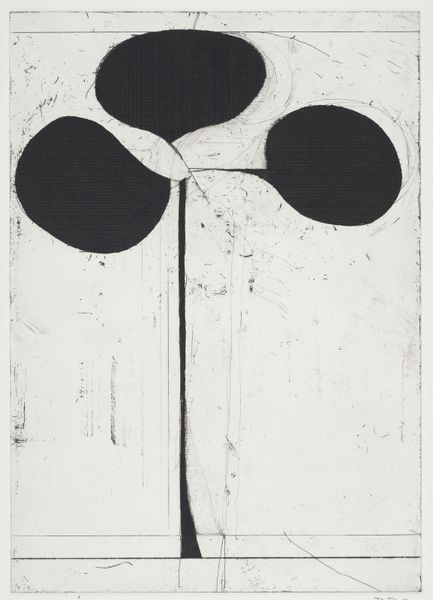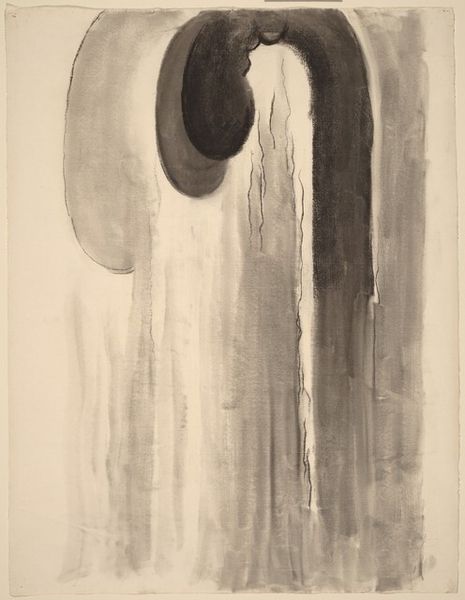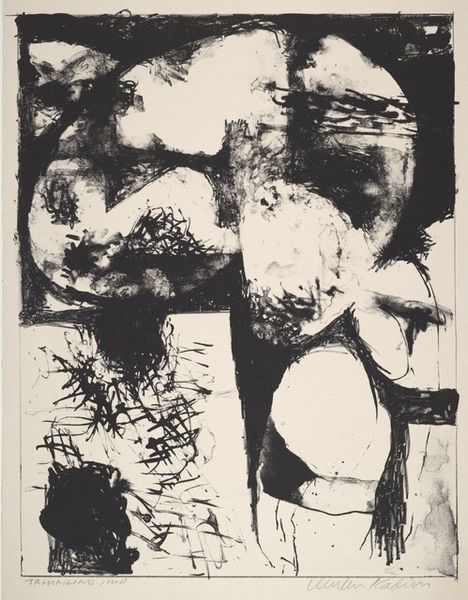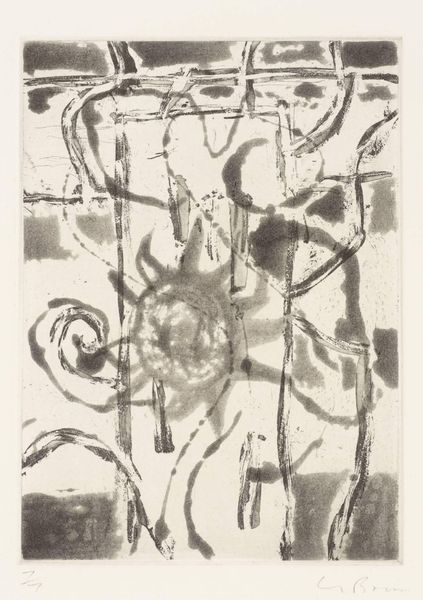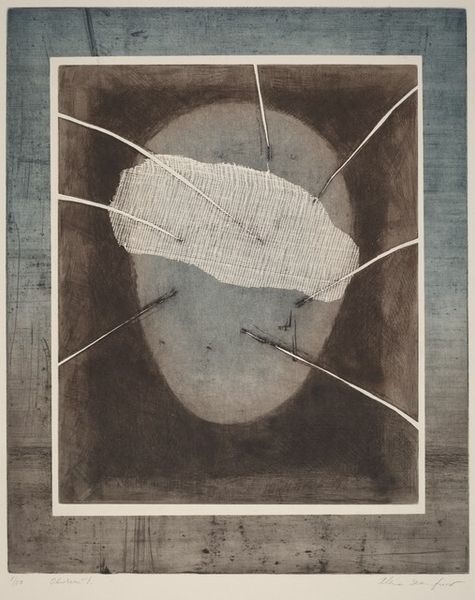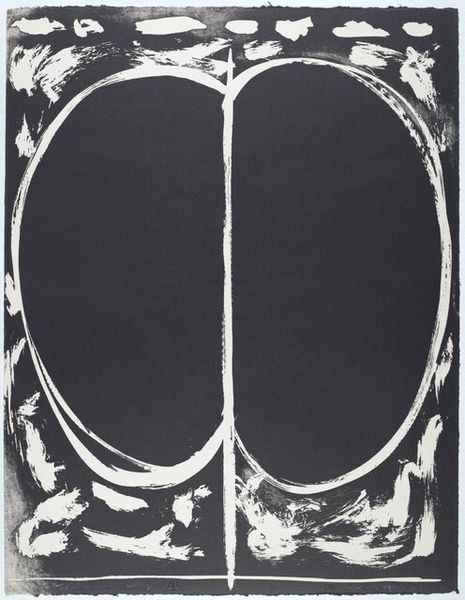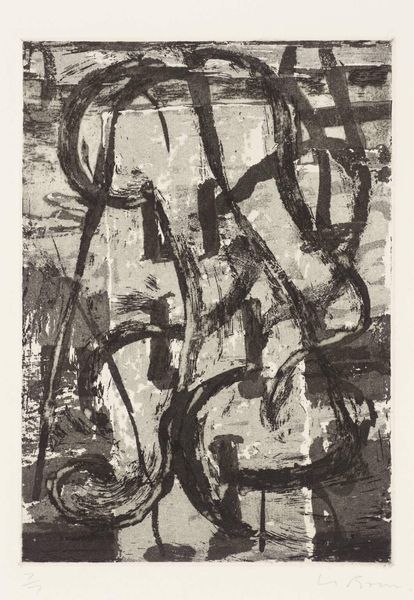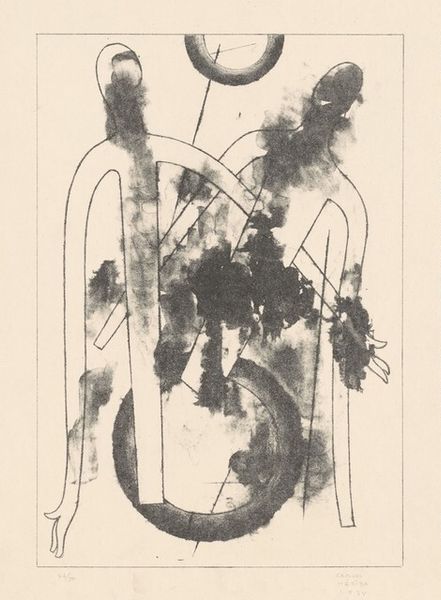
#
abstract-expressionism
# print
#
form
#
geometric-abstraction
#
line
#
monochrome
Copyright: National Gallery of Art: CC0 1.0
Editor: We're looking at Emerson Woelffer's "Untitled" from 1961, a print in monochrome. It feels almost like a stylized face or figure, stark and bold. What strikes you when you look at it? Curator: I'm drawn to the raw simplicity and its resonance within the socio-political context of its time. Consider the early 60s – a period of significant social upheaval and questioning of established norms. Does this abstraction serve as a subtle commentary on societal fragmentation or the deconstruction of identity in a rapidly changing world? Editor: That's a really interesting angle. I was just seeing shapes. Curator: The "shapes," as you call them, speak volumes. The hard edges and almost confrontational composition feel deliberate. Are we looking at a commentary on surveillance, with the abstracted “eyes”? How might we interpret its lack of a definitive title – a deliberate choice perhaps to encourage multiple readings and dialogues? Editor: Surveillance? That's not something I would have considered initially. The two larger circular shapes, like you said, could be read as “eyes.” Curator: Think about how the visual language of abstraction provided artists with a powerful tool to engage with complex social issues while circumventing direct censorship. Does the print’s monochrome palette suggest a world stripped of color, perhaps reflecting the limitations imposed on individual expression during this period? How does it sit in contrast with the Pop Art movement also happening? Editor: So, looking beyond the immediate image allows a far deeper understanding. I see this work in a new light now, beyond its abstract qualities. Thank you! Curator: Exactly! This dialogue between form and context allows us to unpack the layered meanings embedded within the artwork, enriching our appreciation and understanding of Woelffer's vision and intent.
Comments
No comments
Be the first to comment and join the conversation on the ultimate creative platform.

